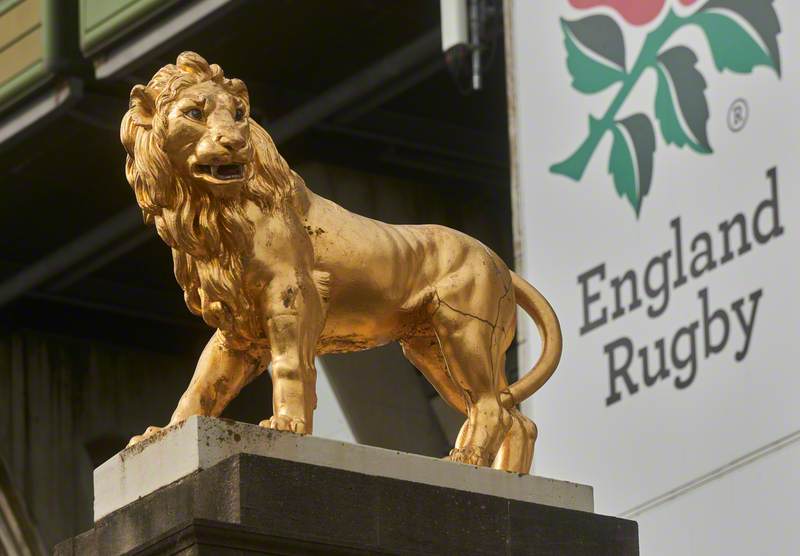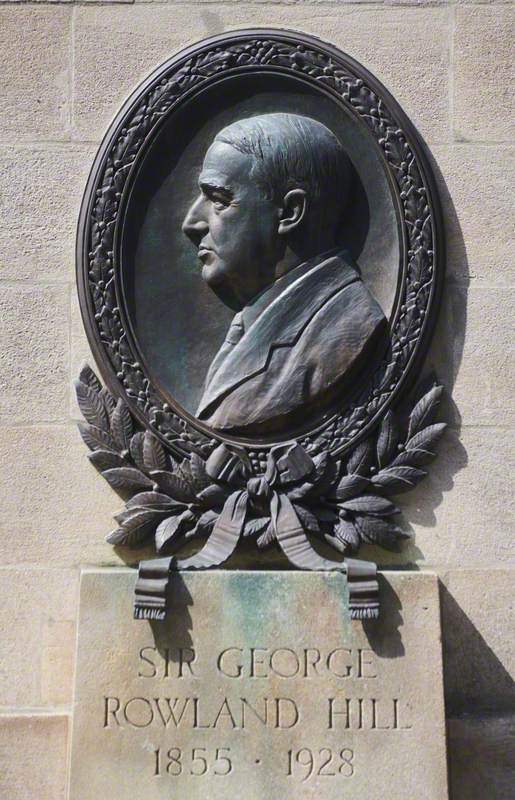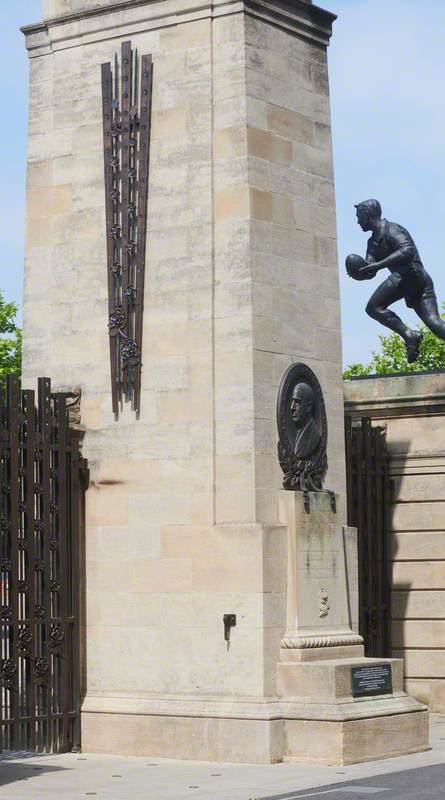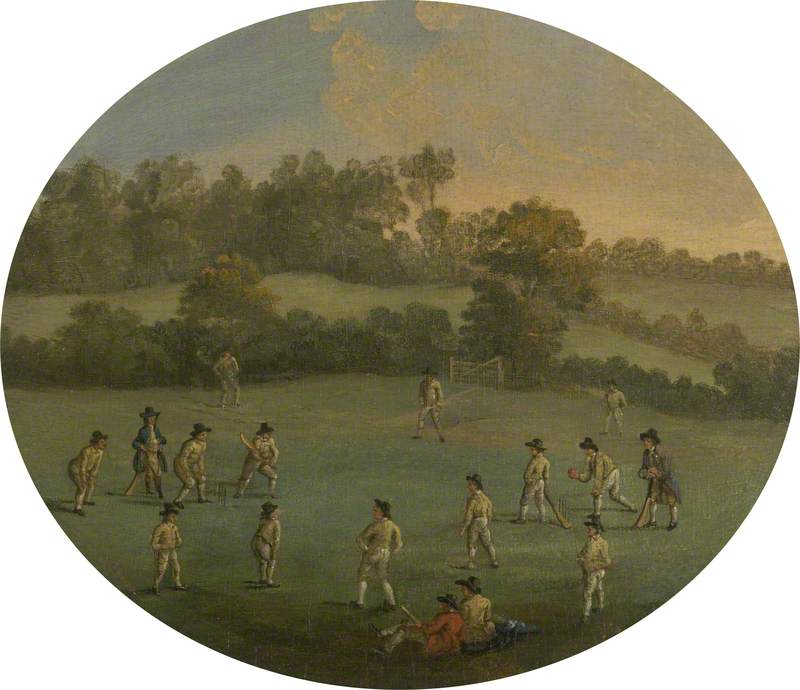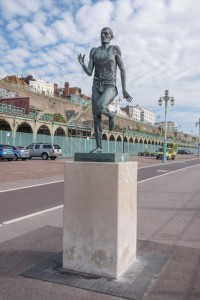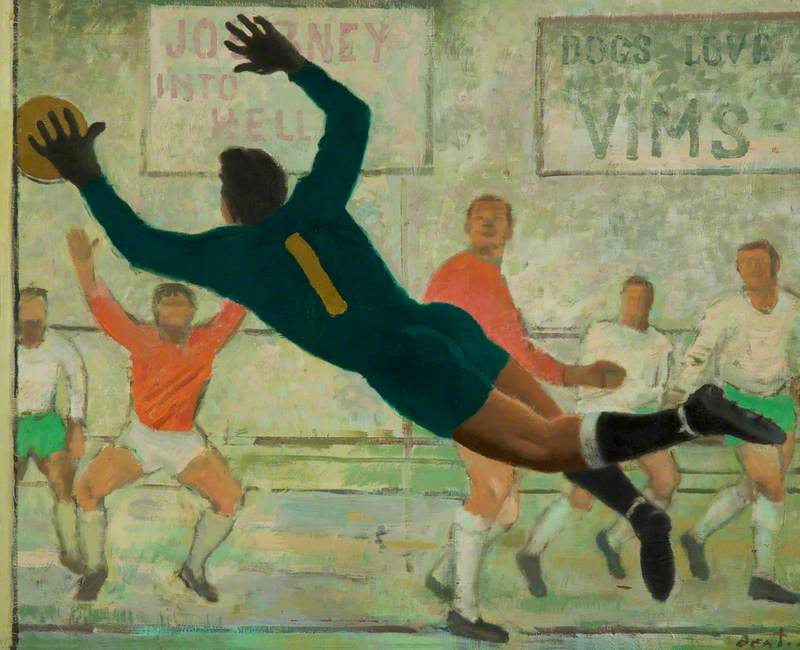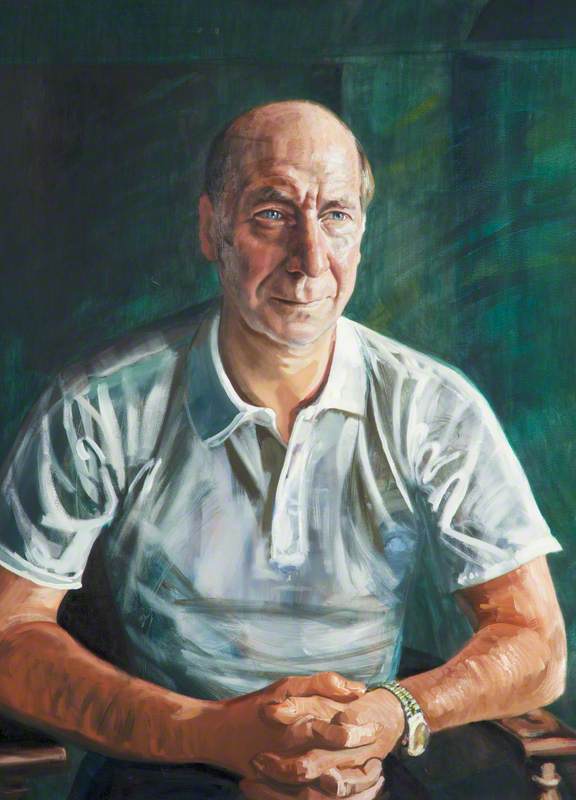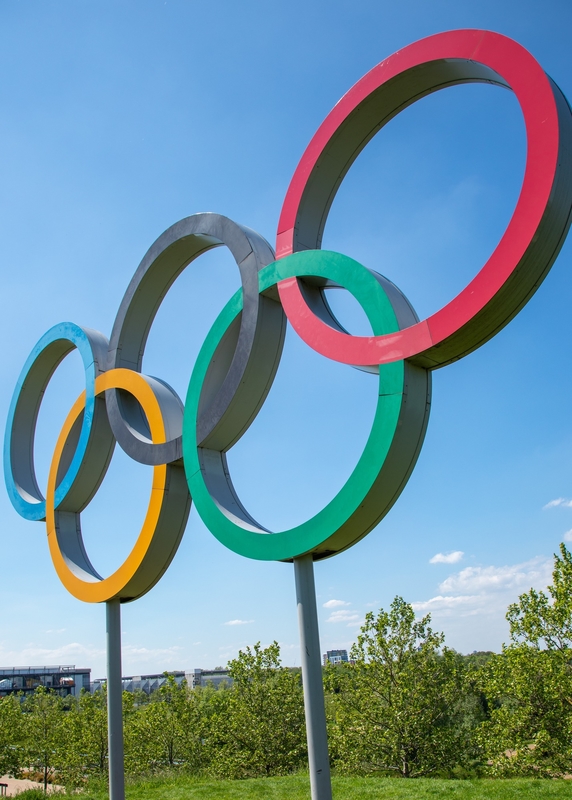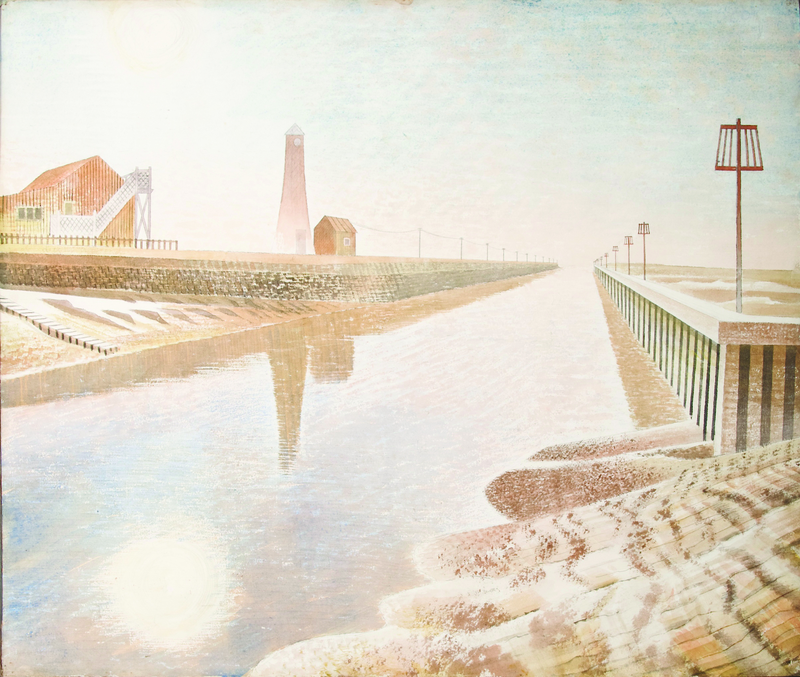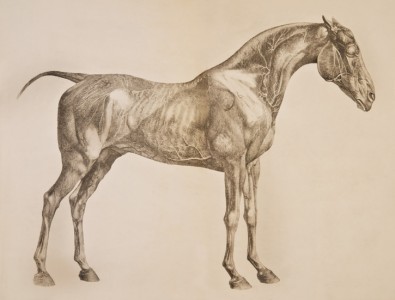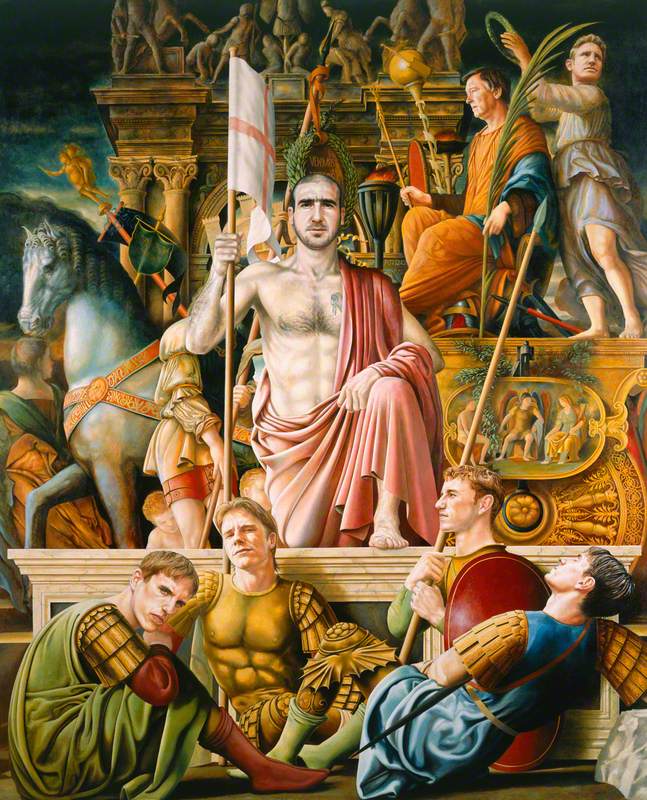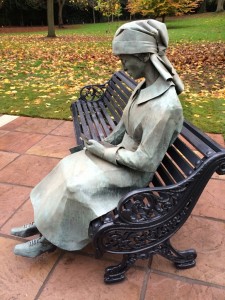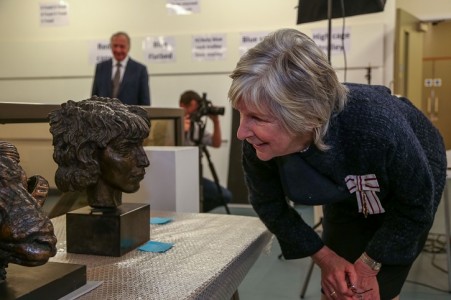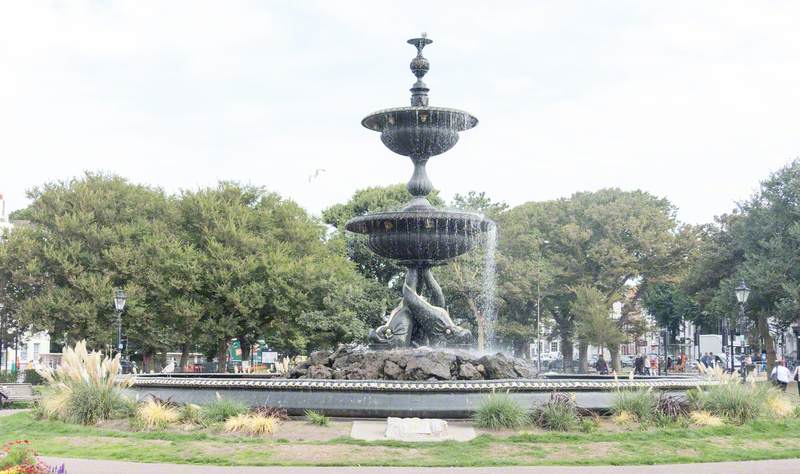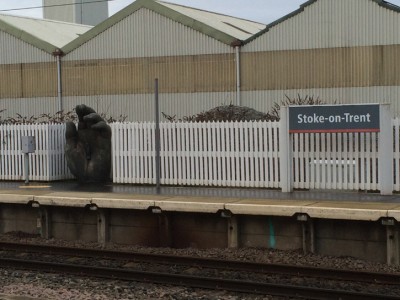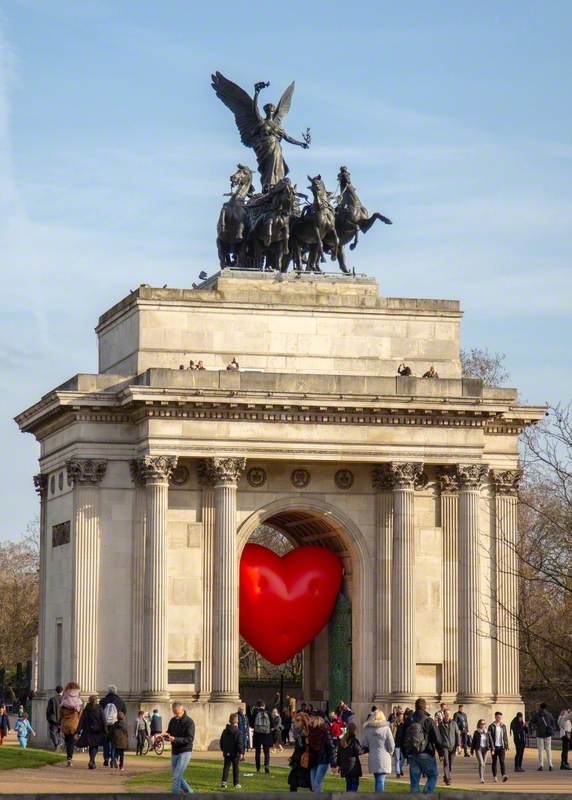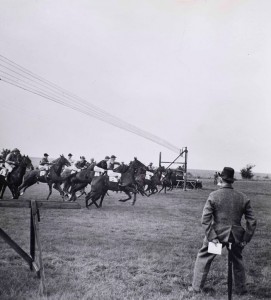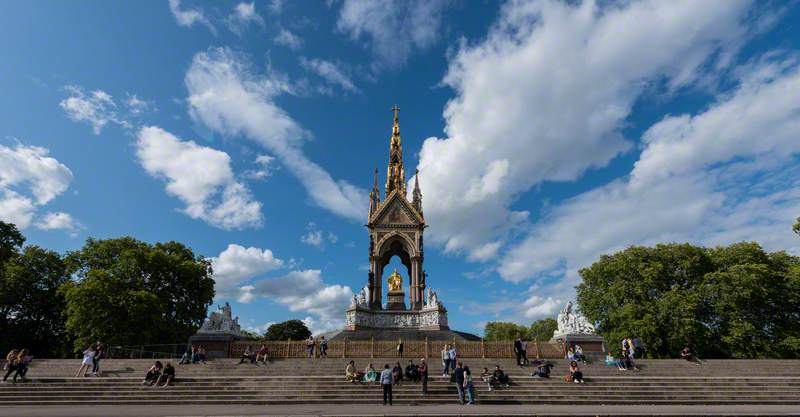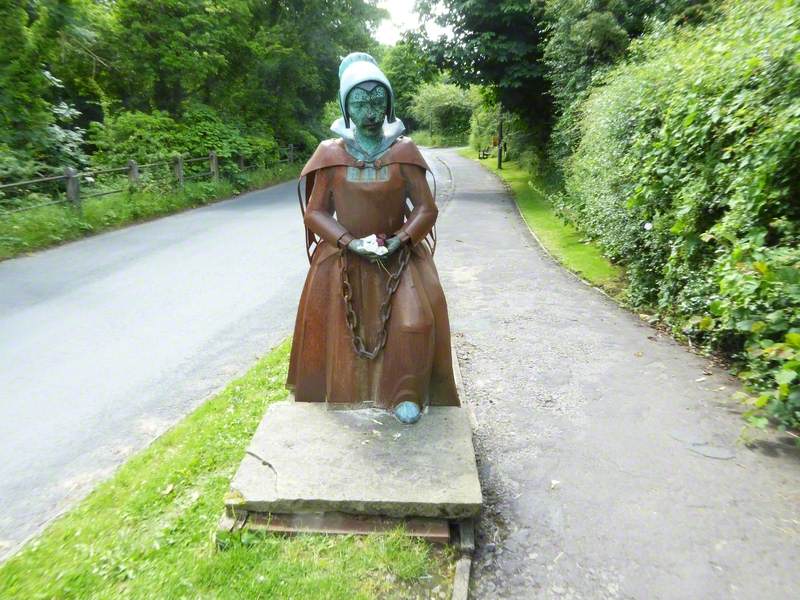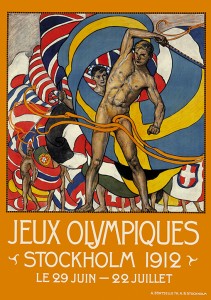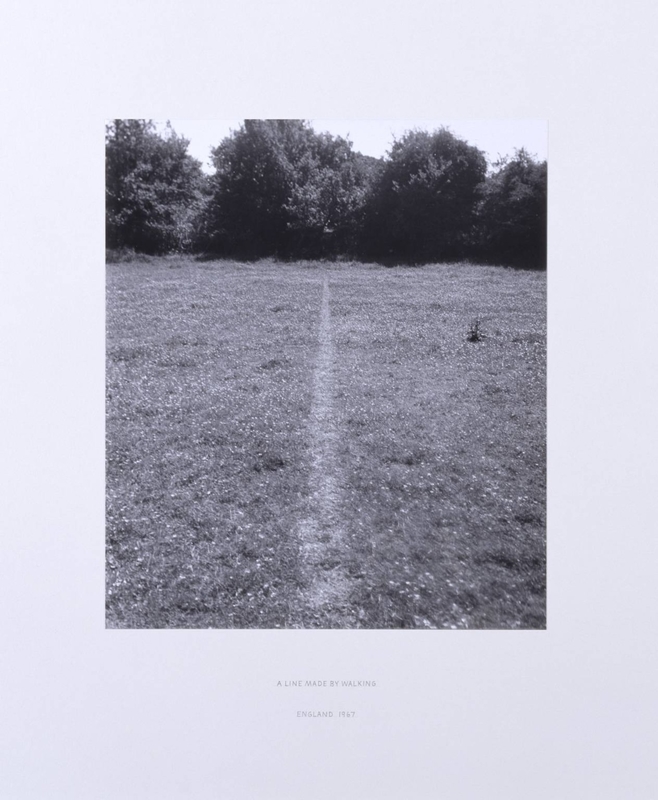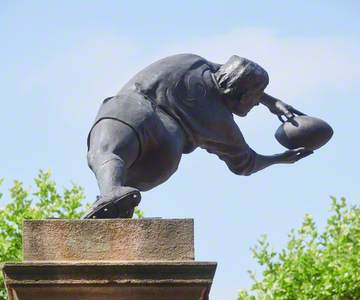A visit to Twickenham Stadium is a visit to the home of English rugby and, for very many, the spiritual home of the sport. The World Rugby Museum holds the largest collection of rugby memorabilia in the world, including a number of interesting statuettes. Though the surrounds of this historic stadium feature the venue's most distinctive sculptures.
Line-Out
2010, bronze by Gerald Laing (1936–2011) 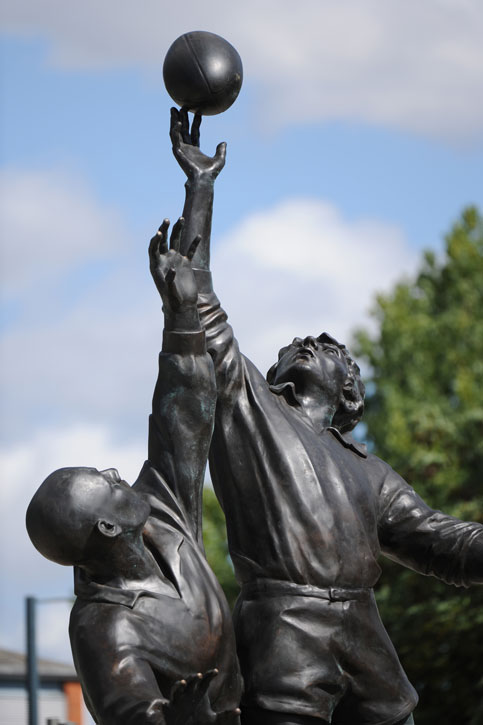
Rugby union, perhaps because it is essentially a team game influenced by its amateur tradition, has celebrated few of its individual heroes in bronze.
Above the gate entrances to the West Stand, and a familiar welcoming feature for thousands of rugby fans, is a series of sculptures by well-known pop artist and sculptor Gerald Laing, illustrating the action, strength and excitement of the sport – but not individual players. Installed in 1996, the four strong and muscular figures feature anonymous players in action representing the 'Spirit of Rugby'.
The Spirit of Rugby (Scrum Half)
1995, bronze statues by Gerald Laing (1936–2011) 
Perhaps most interestingly as a sculpture, the bronze Scrum Half is twisting and turning as the ball is released to the backs.
The Spirit of Rugby (Winger)
1995, bronze statues by Gerald Laing (1936–2011) 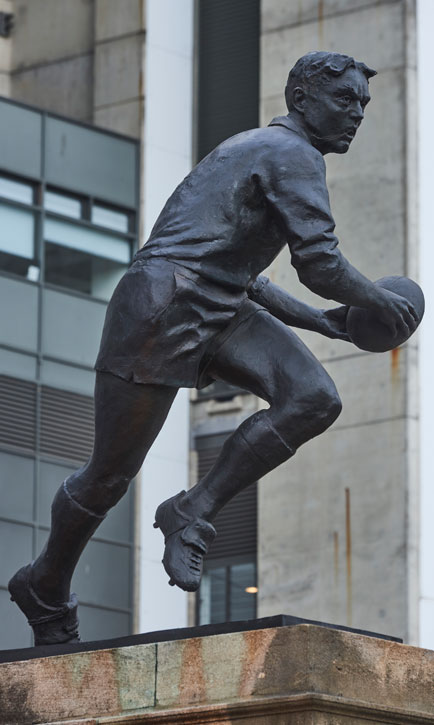
The Winger, with longer and looser shorts and shirt than are now customary, starts his weaving run.
The Spirit of Rugby (Try Scorer)
1995, bronze statues by Gerald Laing (1936–2011) 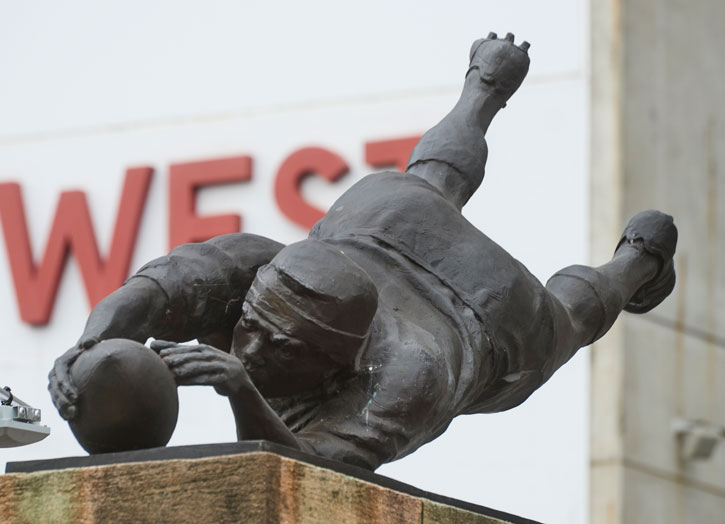
The Try-Scorer dives dramatically for the try.
The Spirit of Rugby (Kicker)
1995, bronze statues by Gerald Laing (1936–2011) 
The Kicker, modern spectators will note, uses the older, traditional kicking style – no 'round the corner' Jonny Wilkinson version.
At the centre of this series of sculptures, high and patriotic on a stone pillar, is a sculpture by the artist William Frederick Woodington of a gilded lion – once belonging to the Lion Brewery and presented by the Greater London Council to the Rugby Football Union (RFU) to mark its centenary in 1971. The gilding was added at the time of the gate's reconstruction in 1996 – along with the familiar rugby players in action.
Set within this central stone pillar is a bronze sculptural relief of Sir George Rowland Hill (1855–1928).
Little does it reveal of his tempestuous time as Honorary Secretary of the RFU from 1881 to 1904 or the contrast between his ideals and the professional game today. Hill led the RFU's staunch refusal in the 1880s to countenance 'broken time' payments (principally sought by northern clubs) to cover a player's lost earnings for training and playing rugby. Rugby would, under the RFU, remain fully amateur. Hill was later described in his obituary in The Times as 'an amateur of amateurs'.
The RFU's refusal led to the 'Great Schism' and the formation of professional rugby league in 1885 by breakaway clubs. Hill, subsequently President of the RFU, was in 1926 the first man to be knighted for services to rugby.
A century after rugby's schism, however, the rugby and associated commercial world had changed fundamentally and the RFU finally accepted professionalism. Hill looks on calmly but somewhat sternly in expression.
Adjacent to and integrated with this central pillar, newly installed in bronze are the Rose and Poppy Gates by sculptor Harry Gray.
Dedicated to the memory of all rugby players who have served and died in conflicts around the world, the gates were unveiled in 2016 as part of the RFU's programme of events to commemorate the centenary of the First World War.
Rose and Poppy Gates (detail of roses)
2016, bronze and brass by Harry Gray 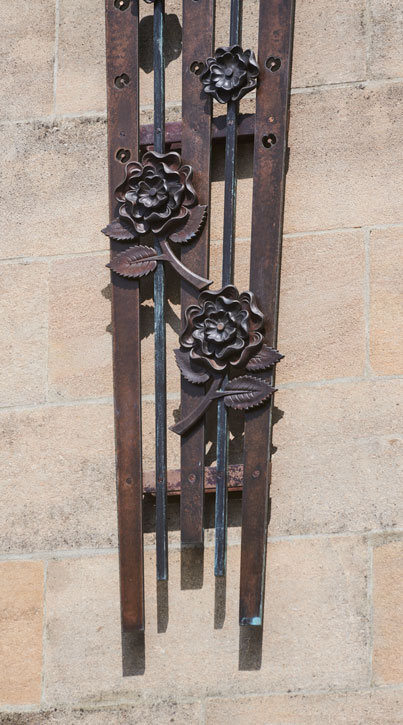
The bronze gates depict roses, as worn by generations of English rugby internationals, gradually transforming into poppies – the symbol of commemoration.
Rose and Poppy Gates
2016, bronze and brass by Harry Gray 
There are 15 roses on each gate, modelled on those worn by the Grand Slam-winning England team of 1914. The poppies at the top of each gate are formed from actual shell-casings fired in anger during the 1914–1918 conflict.
Back to sculptor Gerald Laing. Maintaining the theme of the 'Spirit of Rugby', he was commissioned by the RFU for the giant Line-Out statue which since 2010 has greeted spectators arriving at the plaza at the south entrance to the ground.
Line-Out
2010, bronze by Gerald Laing (1936–2011) 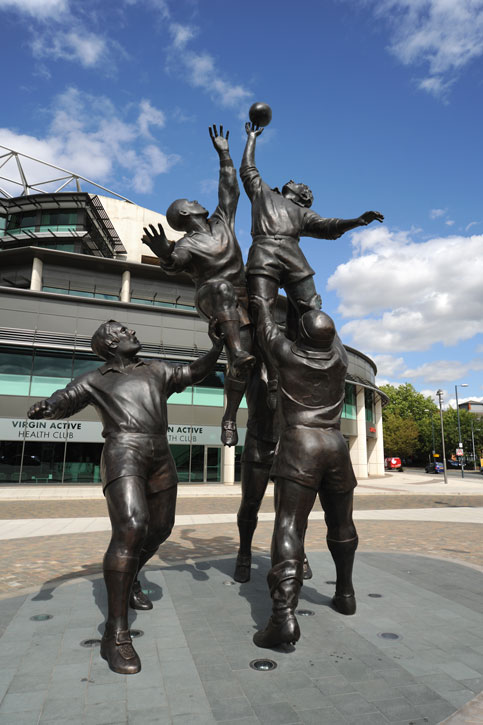
At 27 feet tall, the dramatic sculpture of a line-out pyramid of players reaching into the sky for the ball was originally created in clay, scanned on to a computer and, in giant form, set in bronze by the foundry.
Line-Out
2010, bronze by Gerald Laing (1936–2011) 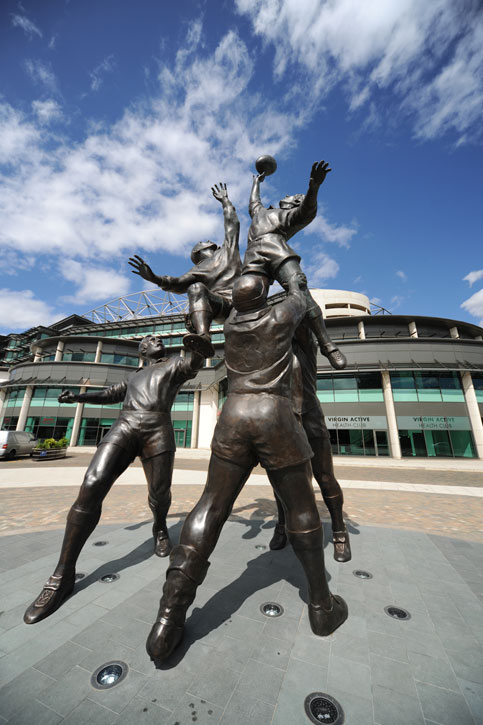
Engraved around the plinth are statements of five core values – 'teamwork, respect, enjoyment, discipline, sportsmanship' – reflecting the spirit of the game.
Ian Hewitt, author
The book Immortals of British Sport: A Celebration of Britain's Sporting History through Sculpture by Ian Hewitt and Sampson Lloyd is published by Vision Sports Publishing (2013)

